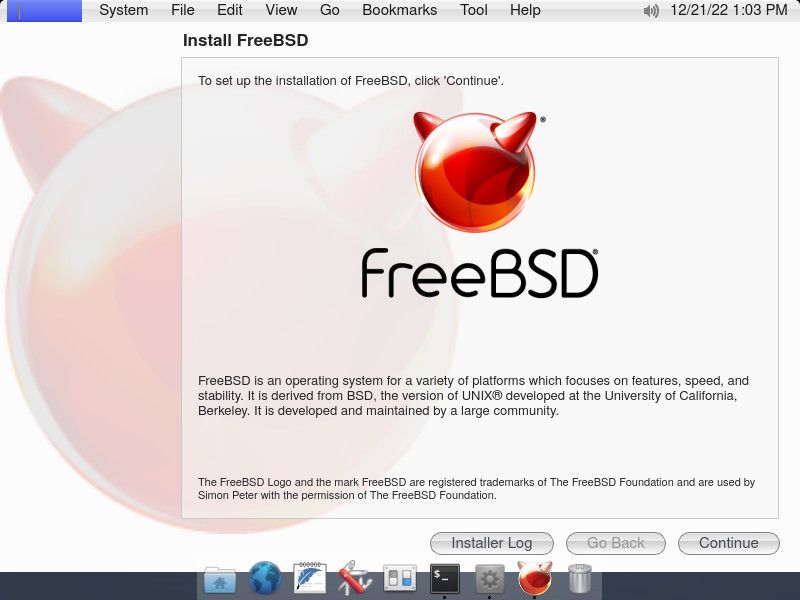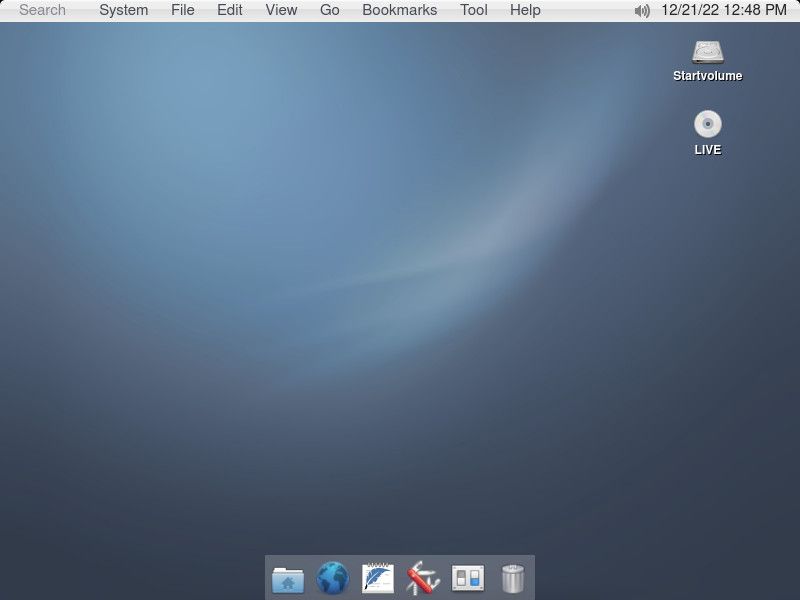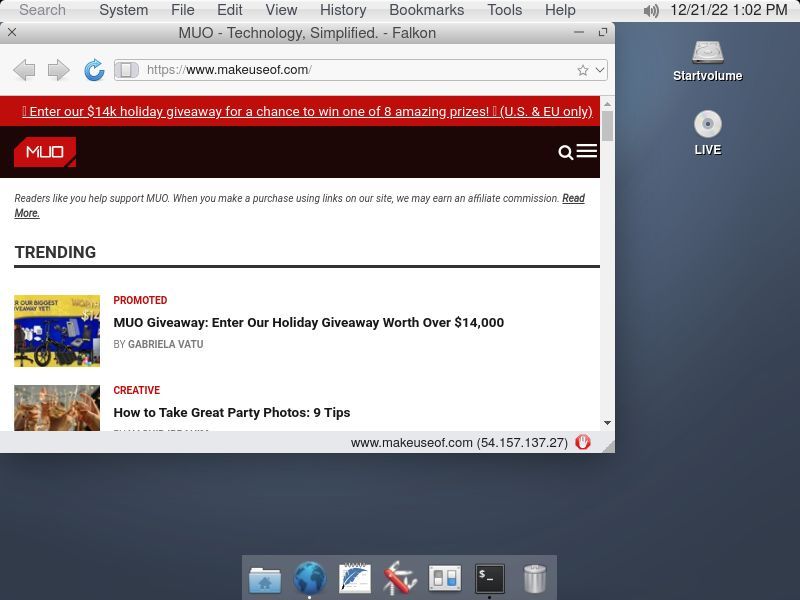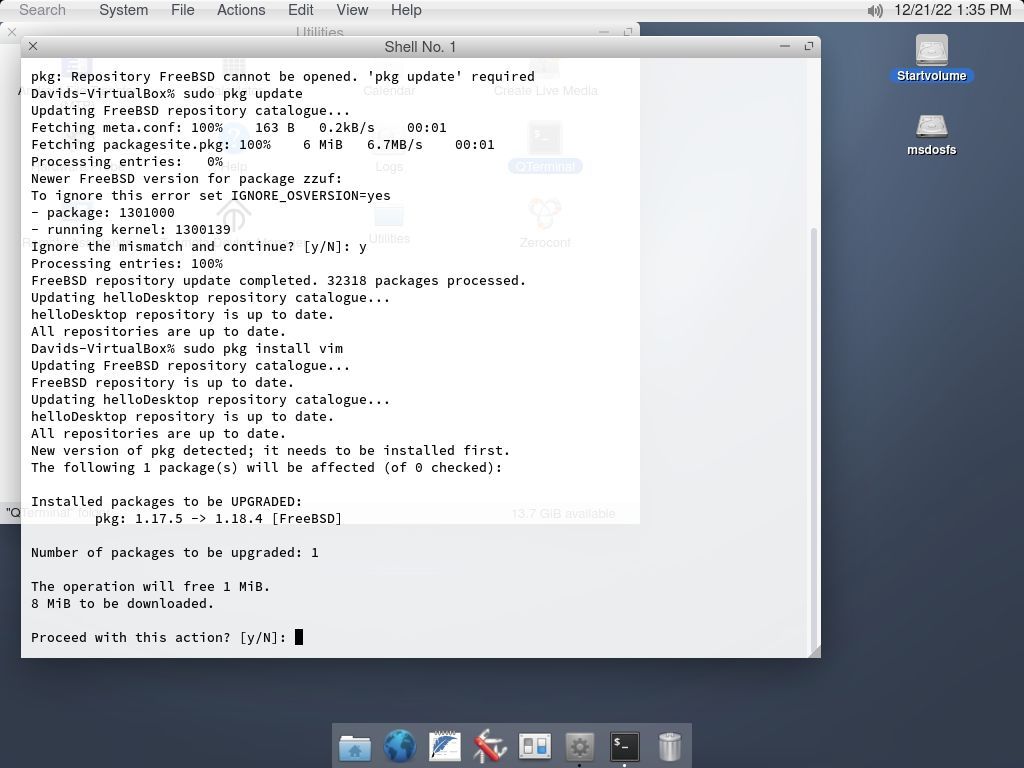For years, macOS has received rave reviews about its user interface, but not so much about the price of Apple's hardware. Open-source advocates have also railed against what they see as Apple's increasingly draconian treatment of its hardware and software.
helloSystem is the latest attempt to recreate macOS's interface in an open-source OS. How does it hold up? Let's find out.
What Is helloSystem?
helloSystem is an open-source OS development effort to provide an elegant user interface on top of free and open software. Like macOS, it's based on FreeBSD.
While the design is obviously influenced by macOS, helloSystem is not intended as a drop-in clone.
The project's developers bill the OS as "a desktop system for creators that focuses on simplicity, elegance, and usability."
The main reason for developing helloSystem is that they feel Apple is increasingly anti-privacy and anti-hacker, locking down much of their hardware and software. They've posted a long list of articles that support their claims on their GitHub page.
The system is still in its early development stages. The latest version is 0.7.0, which was released in December 2021.
Installing helloSystem on a PC
The developers recommend at least 2GB RAM and a 2GHz dual-core Intel or AMD processor. If you're running it on VirtualBox, they recommend using EFI instead of the standard BIOS firmware. The developers really recommend that you try it on real hardware, though.
Installing helloSystem is a lot like installing a standard Linux distribution. You just download the ISO file, extract it to your boot media, and then restart your machine. Like a lot of modern distros, helloSystem boots to a live version. This lets you try out the interface before you commit to an installation.
There are several other utilities, such as a calculator and a terminal application. Looking around at this live environment, it looks slick but it's obvious that the system is incomplete. Even the display preferences setting doesn't work.
While helloSystem still feels like a tech demo, you can install it on your hard drive.
You'll get a graphical installer instead of the standard text-based FreeBSD installer. You can pick the hard drive to install, and you can set up a username and password for administrative tasks.
The helloSystem Desktop
The interface does look a lot like macOS. There's a menu bar at the top that stays there all the time. There's a dock where you can keep frequently used applications to launch quickly.
The system includes two browsers, Falkon, based on Firefox, and Iridium, based on Chromium. It also comes with the FeatherPad text editor and a calendar program. This makes it a usable desktop, but barely. Clearly, the developers have a lot of work ahead of them.
There are a number of other utilities, such as a calculator and a terminal application. The default shell is zsh, which is the same as on macOS. There's also a tool to extract ISO images to USB media.
If you installed helloSystem on the hard drive, it will boot straight into this desktop.
Package Management in helloSystem
Since helloSystem is based on FreeBSD, you can use the FreeBSD packages and ports systems to install additional software. You'll most likely want to use packages since they're precompiled.
You'll want to update the package repository first by typing:
sudo pkg update
To install a particular package, such as Vim, you can just run the pkg command:
sudo pkg install vim
Package management seems to be another feature that's incomplete in this version. Trying to install something as basic as Vim gave an error when attempting to run the program.
helloSystem has a Debian runtime that's listed as "under construction." Attempts to install Debian 11 Bullseye also failed on this system, even with two builds available. This could give access to a wider variety of software when this feature is fully implemented.
Is helloSystem Too Good to Be True?
A project to implement a macOS-like open-source OS sounds ambitious. The developers don't seem to be aiming for exact compatibility, but the macOS interface obviously inspires the helloSystem layout.
An interface inspired by macOS might be better than trying to create a direct replacement for it. Perhaps the developers have learned from the experience of ReactOS and have coupled themselves more loosely to a moving target.
The incompleteness of helloSystem as of December 2022 means that it's still an interesting idea for power users. The developers even have a message saying that this version is intended for developers and power users.
Users who are looking for a good open-source daily driver with a nice UI but don't want to pay the Microsoft or Apple taxes will be better served by a standard FreeBSD or Linux installation at the moment.
Ubuntu's modified GNOME desktop most closely resembles macOS with its menu bar at the top of the screen and dock. Other open-source desktops like KDE and XFCE have also built attractive user interfaces for Unix-like systems.
Despite the age of the last version, the project seems active on GitHub. The repositories seem to receive plenty of updates. This means that a new version might be on the horizon. The real test would be how many promised features are actually implemented. This would show how the OS is proceeding.
At the moment, helloSystem is an interesting tech demo. It will need to be more complete before anyone might consider using it daily.
helloSystem will need to include more apps and make it easier to install new ones to be successful.
A FreeBSD-Based macOS-Like Operating System
With its base in FreeBSD, helloSystem has a lot of potential, even with the frustration of bugs and incomplete features in the system at the present. If the developers pull this off, users could have a viable alternative to macOS without having to pay the steep "Apple tax."
helloSystem is not the only BSD-based effort to build a user-friendly open-source OS. MidnightBSD hopes to create an attractive desktop with the rock-solid backbone of FreeBSD.





